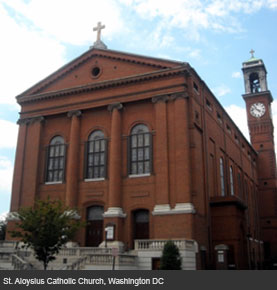
Abstract: The complex relationship between architecture and mathematics enables humans to understand the natural world through patterns and structure. Simply put, math is the arbiter of form in architecture. This project explores and documents the architectural style and history of St. Aloysius Church, D.C. (1859). The American Renaissance Revival style of the late nineteenth century, in which St. Aloysius Church was designed, was an academic and ordered architectural style that evolved from strict laws of geometry emphasizing the precision of measurement and quantification of distance. The purpose of the study is to illustrate the extent to which the geometrical fundamentalism of Italian Renaissance architecture and Jesuit mathematical thought affected the architect's design of St. Aloysius Church. The strict Jesuit mathematical curriculum calls for a fixed hierarchical composition which ultimately results in a balanced and harmonious structure. Moreover, the building's reserved Renaissance Revival design is unusual since most mid-century churches are of Gothic derivation. For this reason, this study explores the architect's reinterpretation of prior knowledge of ecclesiastical visual imagery embodying mathematical patterning to reinforce and enhance links to Christian beliefs.